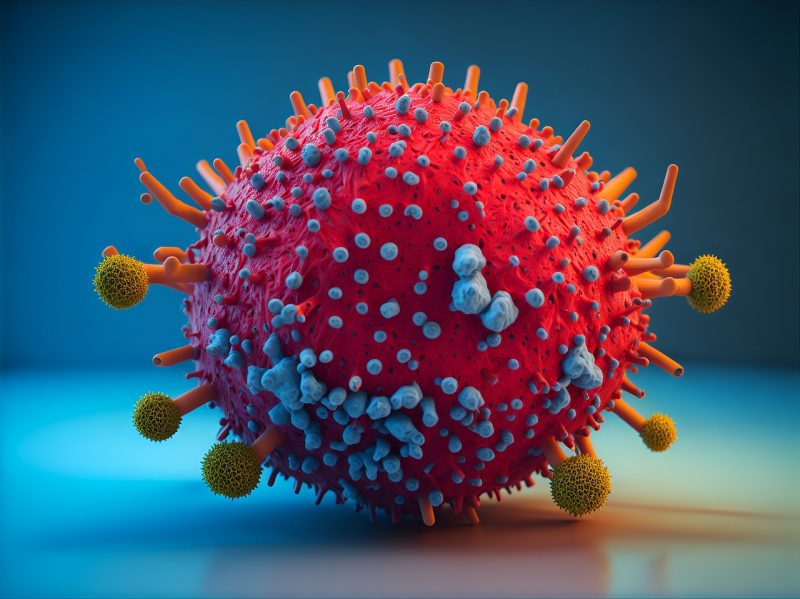For years, the World Health Organization has considered the Nipah virus to be a “priority pathogen” because it has the potential to cause a worldwide pandemic. Thankfully, up to this point that has not happened, but now an outbreak in India is making headlines all over the globe. Two victims have already died, and there are four others that have tested positive. A five kilometer containment zone has been established around the homes of the two men that died, and schools and businesses in the region are being forced to shut down. Authorities are hoping that such extreme measures will stop this outbreak before it can really get going. But as you will see below, that may not be so easy.
According to the CDC, this virus was initially discovered in Asia in 1999. Since that time there have been other outbreaks, and during those outbreaks there have been cases of human to human transmission…
Nipah virus (NiV) was first discovered in 1999 following an outbreak of disease in pigs and people in Malaysia and Singapore. This outbreak resulted in nearly 300 human cases and more than 100 deaths, and caused substantial economic impact as more than 1 million pigs were killed to help control the outbreak.
While there have been no other known outbreaks of NiV in Malaysia and Singapore since 1999, outbreaks have been recorded almost annually in some parts of Asia since then—primarily in Bangladesh and India. The virus has been shown to spread from person-to-person in these outbreaks, raising concerns about the potential for NiV to cause a global pandemic.
Viruses mutate over time, and so there has always been a tremendous amount of concern that a strain could emerge that would be able to pass very easily from human to human.
In addition, it is important to note that this virus can also be transmitted from animals to humans and from humans to animals. The following comes from the official website of the World Health Organization…
Nipah virus (NiV) is a zoonotic virus (it is transmitted from animals to humans) and can also be transmitted through contaminated food or directly between people. In infected people, it causes a range of illnesses from asymptomatic (subclinical) infection to acute respiratory illness and fatal encephalitis. The virus can also cause severe disease in animals such as pigs, resulting in significant economic losses for farmers.
So just tracking down any humans that may have been exposed to the virus is not going to be enough to contain it.
It can spread like wildfire among pigs, and bats are known to be carriers as well.
Once a human is infected, symptoms may not show up until 4 to 14 days after the initial exposure…
Symptoms typically appear in 4-14 days following exposure to the virus. The illness initially presents as 3-14 days of fever and headache, and often includes signs of respiratory illness, such as cough, sore throat, and difficulty breathing. A phase of brain swelling (encephalitis) may follow, where symptoms can include drowsiness, disorientation, and mental confusion, which can rapidly progress to coma within 24-48 hours.
So you could potentially spread this to hundreds of other people before you even realize that you are sick.
Unlike COVID, those that get infected are very likely to die.
In fact, the CDC says that the death rate for the Nipah virus falls within a range of 40 to 75 percent…
Death may occur in 40-75% of cases. Long-term side effects in survivors of Nipah virus infection have been noted, including persistent convulsions and personality changes.
Infections that lead to symptoms and sometimes death much later after exposure (known as dormant or latent infections) have also been reported months and even years after exposure.
Just think about that.
Our world was paralyzed for years by a disease that had an exceedingly low death rate.
So what would happen if the Nipah virus starts spreading worldwide and millions upon millions of people die?
Global health authorities have been concerned about such a scenario for a very long time.
As I mentioned above, the WHO has actually identified it as a “priority pathogen”…
The WHO has designated Nipah a priority pathogen for urgent research and development, one of just 10 diseases the agency lists as having the potential to seed the next pandemic for which we have few to no countermeasures.
There is no cure for the Nipah virus, and so let us hope that this outbreak fizzles out very quickly.
As I write this article, there have been a total of six confirmed cases.
Two of the victims are dead, and four others are currently being treated…
With Kerala’s Kozhikode reporting another confirmed case of Nipah virus on Friday, the state government declared holidays for educational institutions in the district till September 24. India is set to procure 20 more vials of antibody vaccines to treat the infected, the Indian Council of Medical Research (ICMR) said.
On Friday, one more case of Nipah virus infection was confirmed in Kerala’s Kozhikode district after the sample of a 39-year-old man turned positive, taking the total number of cases to six. Active cases now stand at four after two people died due to the infection.
The state of Kerala has already declared a state of emergency, and we are seeing widespread shutdowns in a desperate attempt to contain the virus…
The southern Indian state of Kerala has declared a state of emergency in its fight against the Nipah virus, a rare and deadly disease that has already claimed two lives.
Schools, offices, and public transport have been shut down in a bid to halt the spread of the virus. Indian health officials have implemented various containment zones to control the spread of the virus.
A five-kilometer containment zone was established around the residences of the two men who died of the Nipah virus on August 30, a 47-year-old man, and September 11, a 40-year-old man, according to Health Minister Veena George.
“As of Thursday afternoon, Kozhikode District Collector A Geetha had declared 53 wards as containment zones across nine panchayats (a village council). This number is likely to increase if more positive cases of the virus are reported in forthcoming days,” according to Hindustan Times.
If this thing does get loose and it starts spreading all over the world, it is going to create a tremendous amount of fear.
In fact, it would make what we went through with COVID look like a Sunday picnic.
Speaking of COVID, it is still very much with us.
At this stage, we are being told that the current number of infections is actually “hovering near levels of the pandemic’s first peak in 2020”…
U.S. COVID infections are hovering near levels of the pandemic’s first peak in 2020, and approaching the Delta peak of late 2021, according to wastewater surveillance and modeling by forecasters.
It’s yet another sign that while the official pandemic state may be over, the days of COVID are far from it.
Viral wastewater levels are not far behind all of the pandemic’s 2020 peaks except for one—the initial peak of March 2020, which they’ve already surpassed. And they lag just slightly levels seen during the deadly Delta peak of late 2021, according to Biobot Analytics, which monitors such data for the federal government.
After everything that we have been through, they were never able to defeat COVID.
And now it is just a matter of time before the next great pandemic sweeps across the planet.
As I have warned my readers over and over again, we have entered an era of great pestilences.
Our ability to create and manipulate deadly diseases far exceeds our ability to contain them, and as we have seen once something gets out it can spread around the world in a matter of weeks.
Hopefully this new outbreak in India has been caught in time.
Because if it hasn’t, we could soon have another colossal crisis on our hands.
Michael’s new book entitled “End Times” is now available in paperback and for the Kindle on Amazon.com, and you can check out his new Substack newsletter right here.
About the Author: My name is Michael and my brand new book entitled “End Times” is now available on Amazon.com. In addition to my new book I have written six other books that are available on Amazon.com including “7 Year Apocalypse”, “Lost Prophecies Of The Future Of America”, “The Beginning Of The End”, and “Living A Life That Really Matters”. (#CommissionsEarned) When you purchase any of these books you help to support the work that I am doing, and one way that you can really help is by sending copies as gifts to family and friends. Time is short, and I need help getting these warnings into the hands of as many people as possible. I have also started a brand new Substack newsletter, and I encourage you to subscribe so that you won’t miss any of the latest updates. I have published thousands of articles on The Economic Collapse Blog, End Of The American Dream and The Most Important News, and the articles that I publish on those sites are republished on dozens of other prominent websites all over the globe. I always freely and happily allow others to republish my articles on their own websites, but I also ask that they include this “About the Author” section with each article. The material contained in this article is for general information purposes only, and readers should consult licensed professionals before making any legal, business, financial or health decisions. I encourage you to follow me on social media on Facebook and Twitter, and any way that you can share these articles with others is definitely a great help. These are such troubled times, and people need hope. John 3:16 tells us about the hope that God has given us through Jesus Christ: “For God so loved the world, that he gave his only begotten Son, that whosoever believeth in him should not perish, but have everlasting life.” If you have not already done so, I strongly urge you to invite Jesus Christ to be your Lord and Savior today.

